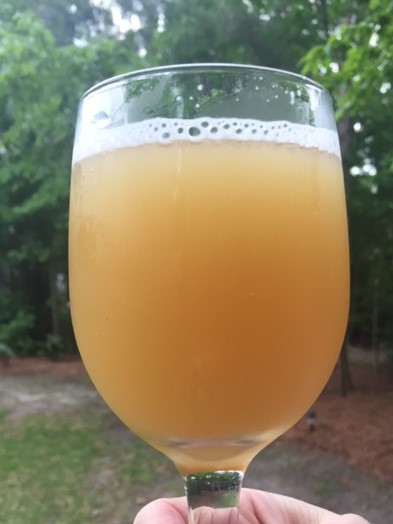I am trying to put together a hazy IPA recipe of my own but having a little trouble on some of the steps. Any input would be great. Here is the recipe I have started.
FERMENTABLES
10lbs. Pale 2 row
1 lb Flaked White Wheat
1 lb Flaked Oats
0.5lbs Carapils. ?
HOPS
1.0 oz Centennial 60 min ?
1.0 oz Citra whirlpool 30 min
1.0 oz Galaxy whirlpool 30 min. Temp?
0.5 oz Citra 0 min
0.5 oz Galaxy 0 min
0.5 oz Citra 3-5 day dry hop
0.5 oz Galaxy 3-5 day dry hop
Wharfloc tablet at 5 minutes
2.0 oz orange peel ?
YEAST
Safale US 0-5
The guestion marks are the areas I am not sure of. Any input will help. Suggestions? Replacements? I am trying to aim for a citrus taste and aroma. The recipe builder put this at 7% ABV with OG at 1.68 and FG at 1.23.
Thank everyone for your input.
FERMENTABLES
10lbs. Pale 2 row
1 lb Flaked White Wheat
1 lb Flaked Oats
0.5lbs Carapils. ?
HOPS
1.0 oz Centennial 60 min ?
1.0 oz Citra whirlpool 30 min
1.0 oz Galaxy whirlpool 30 min. Temp?
0.5 oz Citra 0 min
0.5 oz Galaxy 0 min
0.5 oz Citra 3-5 day dry hop
0.5 oz Galaxy 3-5 day dry hop
Wharfloc tablet at 5 minutes
2.0 oz orange peel ?
YEAST
Safale US 0-5
The guestion marks are the areas I am not sure of. Any input will help. Suggestions? Replacements? I am trying to aim for a citrus taste and aroma. The recipe builder put this at 7% ABV with OG at 1.68 and FG at 1.23.
Thank everyone for your input.


















































![Craft A Brew - Safale S-04 Dry Yeast - Fermentis - English Ale Dry Yeast - For English and American Ales and Hard Apple Ciders - Ingredients for Home Brewing - Beer Making Supplies - [1 Pack]](https://m.media-amazon.com/images/I/41fVGNh6JfL._SL500_.jpg)







